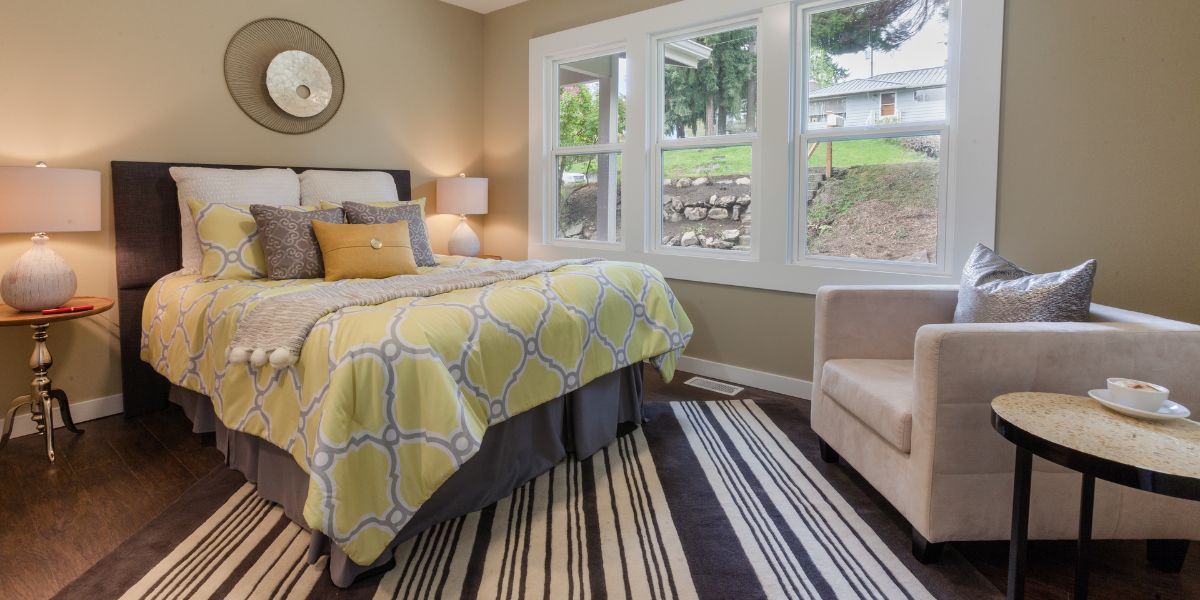Selling your home is a significant decision, and how you present it to potential buyers can dramatically impact the outcome. Staging your home, a strategy designed to showcase its best features, plays a crucial role in this process. By carefully arranging furniture, décor, and even lighting, sellers can create an inviting atmosphere that speaks to the aspirations of buyers. The benefits of home staging are clear: homes that are staged often sell faster and for higher prices than those that are not. This blog will guide you through the process of staging your home, covering everything from the basics of preparation to the finishing touches that make your property stand out. Whether you’re a first-time seller or looking to improve your home’s marketability, these tips will help you navigate the staging process with confidence.
Understanding Home Staging
Home staging is the process of preparing a residential property for sale in the real estate marketplace. Its primary goal is to make the home appealing to the highest number of potential buyers, thereby selling the property more swiftly and for more money. Unlike interior decorating, which reflects the personal taste of the homeowner, home staging focuses on improving the property’s appeal by transforming it into a welcoming, attractive product for sale.
At its core, home staging is about creating a canvas that potential buyers can see themselves painting their futures on. It involves decluttering, repairing, and carefully curating spaces to highlight the home’s strengths while minimizing any weaknesses. This process not only showcases the property’s potential but also helps to create an emotional connection with buyers, making it easier for them to envision living in the space.
The psychological impact of home staging cannot be underestimated. It sets the stage for buyers by presenting a lifestyle choice rather than just a space. A well-staged home speaks to the aspirations of its potential buyers, making it more memorable and desirable in a competitive market. In the following sections, we’ll delve into practical steps for preparing your home for staging, adhering to key principles, and applying room-by-room strategies to ensure your home stands out.
Preparing Your Home for Staging
Before diving into the specifics of staging each room, it’s essential to lay the groundwork. Preparing your home for staging involves several key steps that ensure your property is seen in the best possible light. These steps are crucial for creating a positive first impression and making the staging process more effective.
Decluttering
The first step in preparing your home is to declutter. This means removing excess items that can make spaces feel cramped and distracting. Focus on clearing out personal belongings, bulky furniture, and any décor that doesn’t contribute to a neutral and inviting atmosphere. Decluttering not only makes rooms appear larger but also allows potential buyers to imagine their own belongings in the space.
Deep Cleaning
After decluttering, a thorough deep cleaning is necessary. Every corner of your home should sparkle, from windows and floors to countertops and bathrooms. A clean home is more appealing and suggests that the property has been well-maintained. Pay special attention to high-traffic areas and any spots that are prone to collecting dust or grime.
Repairs
Addressing both minor and major repair issues is the next step. This could range from fixing leaky faucets and patching holes in walls to updating outdated fixtures or painting over bold wall colors with more neutral tones. Completing repairs before staging shows that the home is well-cared for, eliminating potential concerns for buyers and possibly preventing negotiation points on the sale price.
By decluttering, cleaning, and repairing, you set a solid foundation for the staging process. These preparatory steps are crucial for transforming your home into a market-ready property that attracts buyers. Next, we’ll explore the key principles of home staging that will guide you through the process of arranging and decorating your space for maximum appeal.
The Key Principles of Home Staging
Home staging is not just about decorating; it’s a strategic approach to presenting your home in a way that enhances its appeal to potential buyers. By adhering to a few key principles, you can ensure your staging efforts have the desired impact. These principles are designed to make your home appear more spacious, welcoming, and versatile, appealing to a broad audience of potential buyers.
Neutralizing
One of the most important aspects of home staging is neutralizing the space. This means selecting paint, finishes, and décor in neutral tones that can appeal to a wide range of tastes. Neutral colors make it easier for buyers to envision themselves living in the home, as they serve as a blank canvas for their own belongings and style preferences.
Depersonalization
Removing personal items such as family photos, personal collections, and distinctive artwork is crucial in home staging. The goal is to create a space where potential buyers can easily picture their own lives and memories unfolding, rather than feeling like they are in someone else’s home. Depersonalization helps to create a more universally appealing property.
Highlighting Features
Every home has unique features that can be highlighted through staging. Whether it’s a cozy fireplace, a spacious kitchen island, or an abundance of natural light, these features should be accentuated. Arrange furniture and décor to draw attention to these selling points, ensuring they are not obstructed or overlooked.
By focusing on neutralizing, depersonalization, and highlighting your home’s best features, you can create an inviting atmosphere that appeals to a broad spectrum of buyers. These principles serve as the foundation for the staging process, guiding your decisions as you move through each room of your home. In the following section, we’ll delve into a room-by-room staging guide, providing specific tips and strategies to showcase your home’s full potential.

Room-by-Room Staging Guide
Staging your home effectively means paying attention to each room’s unique features and potential. A room-by-room approach ensures that every space is presented in its best light, appealing to the broadest audience possible. Here’s how to tackle each major area of your home:
Living Room
The living room often serves as the focal point of a home, offering the first impression to potential buyers. Ensure the space is inviting and well-lit, using both natural and artificial light. Arrange furniture to create a conversational area that also allows easy flow through the space. Remove any oversized or unnecessary pieces to make the room appear larger. Accentuate with a few neutral, tasteful décor items to add warmth without clutter.
Kitchen
Kitchens are a key selling point for many buyers. Clear countertops except for a few decorative items to suggest spaciousness and functionality. Ensure all appliances are clean and in good working order. Organize cabinets and pantries, as buyers often look inside to assess storage space. If possible, update hardware and fixtures for a modern touch.
Bedrooms
Bedrooms should appear tranquil and spacious. Use neutral bedding and minimal décor to create a serene atmosphere. Make sure closets are tidy and partially empty to demonstrate ample storage. Consider the arrangement of furniture to maximize the sense of space and comfort.
Bathrooms
Bathrooms must be spotless and free of personal items. Fresh towels, a new shower curtain, and a clutter-free vanity can transform the space. If budget allows, updating fixtures and lighting can significantly enhance the bathroom’s appeal. Always ensure there is adequate lighting and use mirrors strategically to make the space appear larger.
Additional Spaces
Don’t overlook areas like the dining room, home office, or outdoor spaces. A dining table set for a simple meal can suggest hospitality, while a neatly organized home office can appeal to those working from home. Outdoor areas should be tidy, with well-maintained landscaping and inviting seating areas if space allows.
In each room, remember to address lighting, clutter, and flow. Your staging should allow potential buyers to effortlessly envision living in and using the space. Up next, we’ll cover the finishing touches and additional tips that can elevate your staging and make your home even more appealing to buyers.
Finishing Touches and Additional Tips
After addressing the major areas of your home through decluttering, cleaning, repairing, and staging room by room, it’s time to focus on the finishing touches. These details can significantly enhance the overall appeal of your property and create an inviting atmosphere that resonates with potential buyers. Here are some additional tips and finishing touches to consider:
Lighting
Proper lighting is crucial in showcasing your home’s best features. Make sure each room is well-lit, combining ambient, task, and accent lighting to create a warm and welcoming environment. Open curtains and blinds to let in natural light during viewings, making spaces appear brighter and larger.
Scents
The scent of your home can leave a lasting impression on potential buyers. Aim for a clean, subtle fragrance that won’t overpower the senses. Natural sources like freshly baked cookies or a vase of flowers can evoke a comforting and homey feel without the use of strong artificial air fresheners.
Curb Appeal
First impressions matter, and the exterior of your home is the first thing potential buyers will see. Ensure your property’s façade is clean and inviting, with a well-maintained lawn, tidy landscaping, and a clear path to the entrance. Consider adding a few potted plants near the entryway for a welcoming touch.
Minor Updates
Small updates can make a big difference in the overall appeal of your home. Consider replacing outdated cabinet knobs, door handles, light fixtures, and switch plates with modern alternatives. These minor changes can refresh the space without requiring a significant investment.
Depersonalize and Neutralize
While covered earlier, it’s worth reiterating the importance of depersonalizing and neutralizing your space. Removing personal items and opting for neutral décor and wall colors help buyers envision themselves in the home, increasing its appeal.
By implementing these finishing touches and additional tips, you can enhance the staging of your home, making it more attractive to potential buyers. These efforts can contribute to a quicker sale and possibly even a higher selling price. In the next section, we’ll conclude our guide with a recap and some final thoughts on the importance of staging your home for sale.
Conclusion
Staging your home for sale is more than just a preparation step; it’s a strategic approach to marketing your property. By following the principles and tips outlined in this guide, you can significantly enhance the appeal of your home, making it stand out in a competitive market. From decluttering and deep cleaning to applying the finishing touches that evoke an inviting atmosphere, each step plays a crucial role in attracting potential buyers.
Remember, the goal of staging is not just to sell your home faster but to potentially increase its sale price by showcasing its best features in the best possible light. By creating a space that buyers can envision as their own, you’re not just selling a property; you’re selling the possibility of a new life in a new home.
As you embark on the staging process, keep in mind that small efforts can lead to significant rewards. Whether you’re tackling this task on your own or enlisting the help of a professional stager, the investment in time and resources can pay off handsomely in the end. With your home staged and ready for viewings, you’re one step closer to a successful sale and the next chapter in your life.
If you need more helpful tips on staging your home, be sure to reach out to your local Augusta real estate agent.


